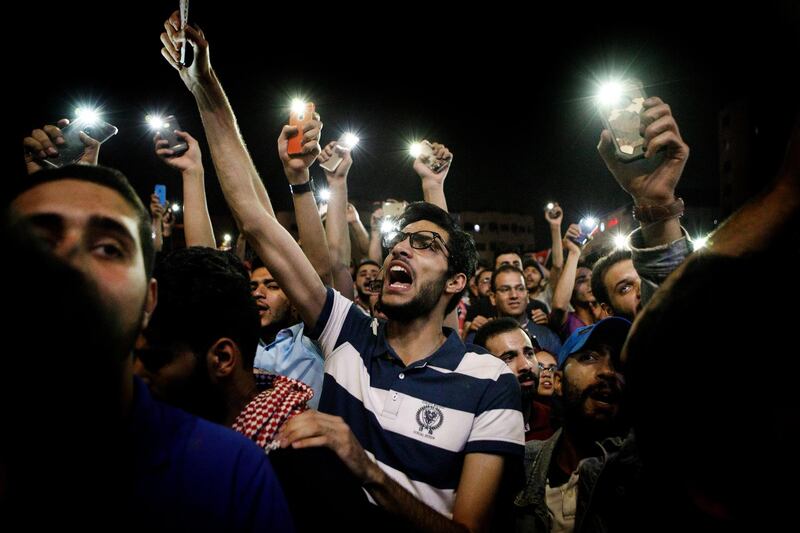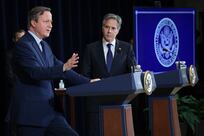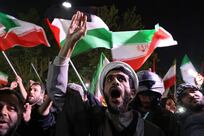Even the most cynical of journalists cannot help but get caught up in the possibilities and hopes that a new year brings. Although no major changes occur between 11.59 on the December 31 and 00.00 on January 1, ringing in a new year inevitably allows for some reflection and looking forward. With a volatile region and several ongoing conflicts, there are no givens, and predictions are impossible to make. What we can do is take stock and follow recent trends that will impact coming months.
From Iraq’s first elections after defeating ISIS, to the damage of the US embassy move to Jerusalem, this past year was monumental. As for the coming one, key events of 2018 will set the tone for a number of countries. In December alone, a cooling of two internal conflicts allows for a less pessimistic outlook for the people of Yemen and Syria. While it would be wrong and premature to assume that both situations are coming to an end, they are entering new phases that promise to reduce the levels of violence. In Yemen, UN special envoy Martin Griffiths has put the warring sides on the path to a political process that could end the war and the Houthis’ illegal coup in Sanaa. In March 2019, the Yemen war would enter its fifth year. If the Houthi rebels accept that they must allow for legitimate governance and accept a political settlement, and the government accepts its own shortcomings, then this may be an anniversary the region doesn’t have to mark – or at least, be the last one before Griffiths’ plan comes to fruition.
In Syria, Bashar Al Assad’s regime undoubtedly finds itself in a stronger position than it has for years – this does not wash away its crimes or end the suffering of millions of Syrians. However, striking political deals and the reduction of violence can only be a good thing for those who have suffered so much from the war. The decision by the United Arab Emirates and other Arab countries to reopen their embassies in Damascus signals an Arab re-engagement that has been lacking for years – one that will need to be targeted towards stabilisation and the protection of the Syrian people. That will be challenge in 2019, especially if the regime is emboldened rather than encouraged to find a way to come to a political settlement. The road to that settlement is still long, with a new UN envoy and a disengaged America, change is afoot.
And yet, Syria’s borders and Iran’s nefarious role in the conflict raise one of the greater threats of 2019. Israel has been able to use the presence of Hezbollah and Iranian militants as a pretext to strike at the country repeatedly. As Israel approaches elections in April and Iran feels the sting of sanctions in the coming months, the possibility of escalation inside Syria and Lebanon rises. In a speech to the UN only last September, Israel’s prime minister Benjamin Netanyahu identified direct targets inside Beirut that he claims are Hezbollah bases. That speech was a precursor to ramped up rhetoric, followed by the uncovering of secret tunnels dug by Hezbollah. Continued Israeli strikes are almost guaranteed, with the American State Department issuing a statement last week supporting “Israel’s right” to self-defence. Following an American withdrawal from Syria, Israel will be further emboldened to play the self-defence card.
Although Washington’s influence in the region is waning, with a US president repeatedly declaring his intent to disengage, it remains instrumental in the resolution of the most intractable conflict in the region. Ending the Israeli occupation of Palestine and bringing peace to the region has been a pressing issue for the past 70 years. President Donald Trump’s promise of delivering “the deal of the century” has not been met. Details of the deal remain so secretive that some have come to the conclusion that it does not exist. In any case, with elections in both Palestine and Israel expected in the first half of 2019, any deal-making will not be possible with weakened leadership in both camps.
As the United States itself unofficially gets into presidential election season and Europe deals with the fallout from Britain’s exit from the EU next March, Russia will continue to flex its muscles in the Middle East. All eyes will be on President Vladimir Putin’s efforts to end the Syrian war on his terms and his attempts to play a great role in the region. However, divisions between Moscow and Tehran may lead to unforeseen conflict.
All of this comes against the backdrop of simmering internal tensions within a number of Arab countries and outright protests in Arab cities such as Amman, Khartoum, Basra and Tunis. They will continue into the new year and possibly expand, as calls for better governance remain unanswered.
And let us not forget that the leader of ISIS, Abu Bakr Al Baghdadi, remains at large. Capitalising on security vacuums, conflicts and internal strife has been instrumental to terror groups for decades. While opportunities for peace are always present, continued conflict and legitimate grievances do not bode well for 2019.





